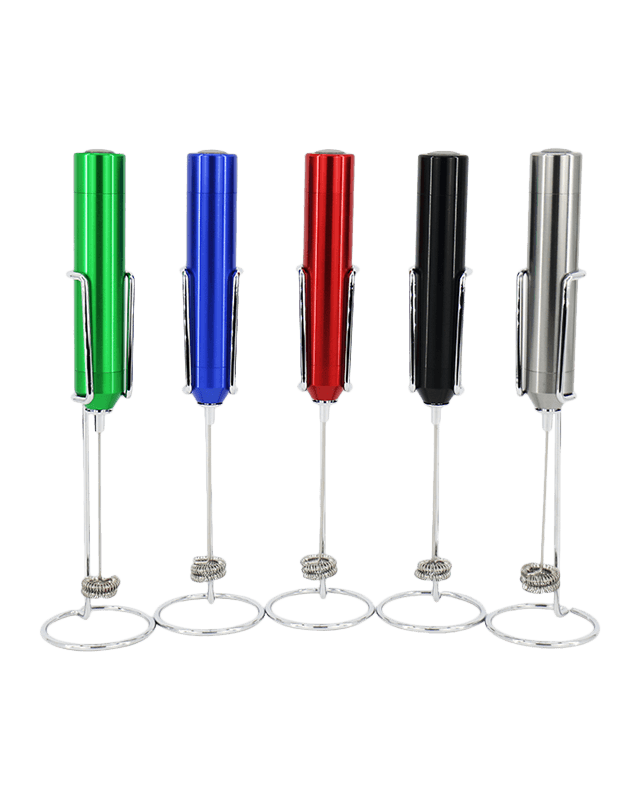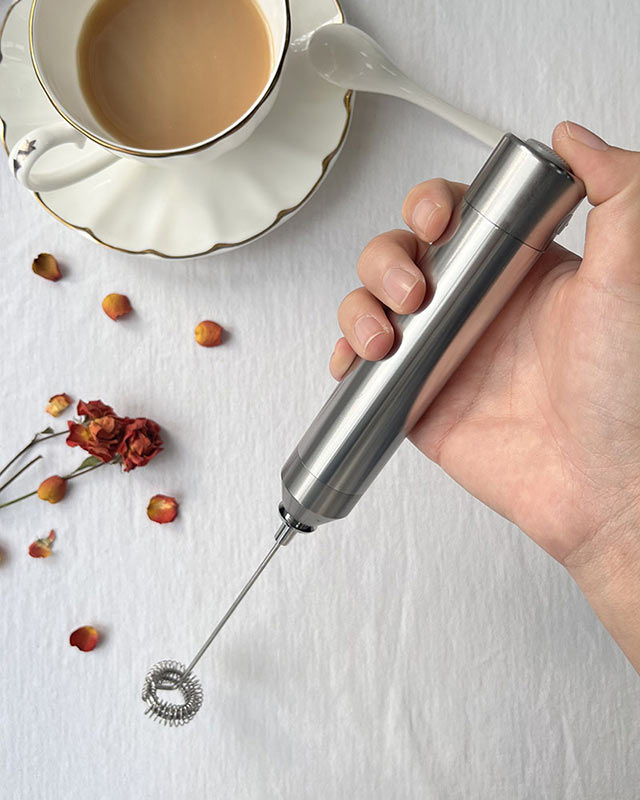Immediate Cleaning: After each use, it’s crucial to address any milk residue promptly. Rinse the frothing whisk or attachment under warm water immediately. This prevents the milk from drying and hardening, which can create stubborn deposits. If possible, fill a small bowl with warm water and operate the frother briefly in the water; this method allows residual milk to be expelled from the whisk, ensuring a thorough clean. Additionally, using a gentle dish soap during this immediate cleaning can help break down fats and proteins more effectively.
Deep Cleaning: Conduct a deep cleaning session weekly or bi-weekly, depending on usage. Detach the whisk and soak it in a solution of warm water and mild dish soap for about 10-15 minutes. This soaking helps loosen any stubborn residue. After soaking, use a soft-bristled brush or a non-abrasive sponge to scrub the whisk and any other removable parts, focusing on areas where milk can accumulate, such as joints and crevices. For the frothing jug, if your model has one, clean it by filling it with warm soapy water, frothing the solution for a few seconds, then rinsing thoroughly. Ensure that all soap is rinsed away to prevent any flavor contamination in future uses.
Wipe the Base: For standalone models, it’s essential to maintain the cleanliness of the base unit. After each use, take a damp cloth and gently wipe the exterior, especially around the base where milk splatters might accumulate. Be cautious not to allow water to seep into the electrical components. For more thorough cleaning, use a disinfectant wipe on the outer surfaces, making sure it’s safe for electronics. Regularly check the cord for any signs of wear and ensure it remains dry and free of any spills.
Check for Clogs: Regular maintenance should include a thorough inspection of the frothing mechanism for clogs. If you notice a decline in frothing quality, there might be blockages caused by dried milk or fat. Use a toothpick or a small, soft brush (like a toothbrush) to carefully clear any debris from the whisk or frothing head. Ensure that you handle this gently to avoid damaging delicate components. Consider running a cleaning cycle with water and vinegar occasionally to prevent buildup in hard-to-reach areas.
Avoid Harsh Chemicals: When cleaning your electric milk frother, stick to mild dish soap and warm water. Avoid using bleach or abrasive cleaners, as these can damage the materials and lead to degradation over time. If you require a deeper clean, consider using a mixture of baking soda and water, which is effective for removing odors and light stains without harming the surface. Always ensure that any cleaning agents used are food-safe, as residues can affect the taste of future froths.
Store Properly: Proper storage extends the life of your electric milk frother. When not in use, store it in a cool, dry place. If possible, keep the frother in its original packaging or in a designated cabinet to protect it from dust and accidental impacts. Detaching the whisk not only prevents damage but also keeps it clean and ready for the next use. If the frother is part of a set with a frothing jug or other accessories, ensure these are also cleaned and stored together to prevent misplacement.
Milk Frother, Milk Foamer, Coffee Mixer, Mini Mixer, Stirrer, Whisk EP-568A-3




 English
English
 Français
Français
 Español
Español
 Deutsch
Deutsch
 日本語
日本語





























